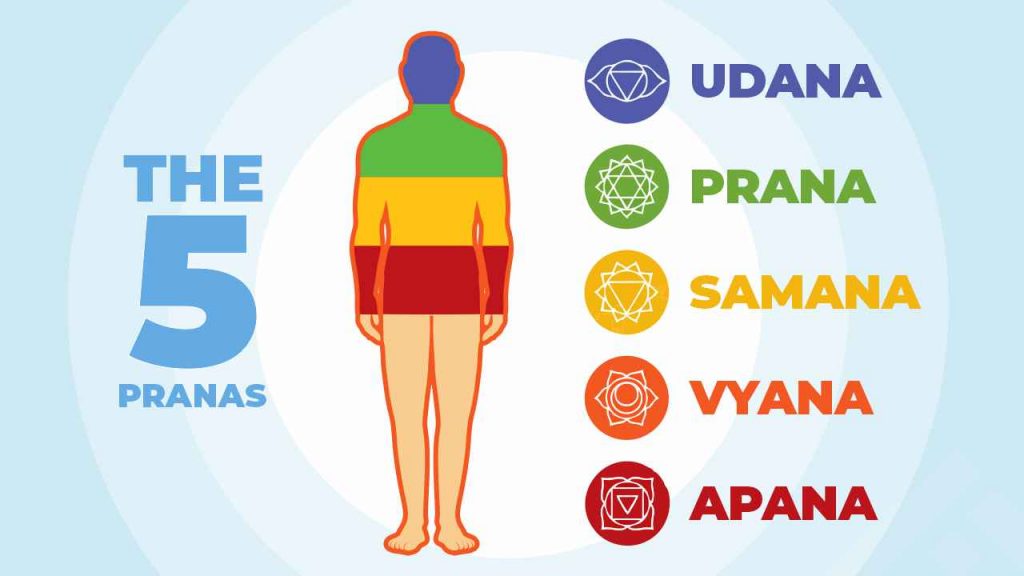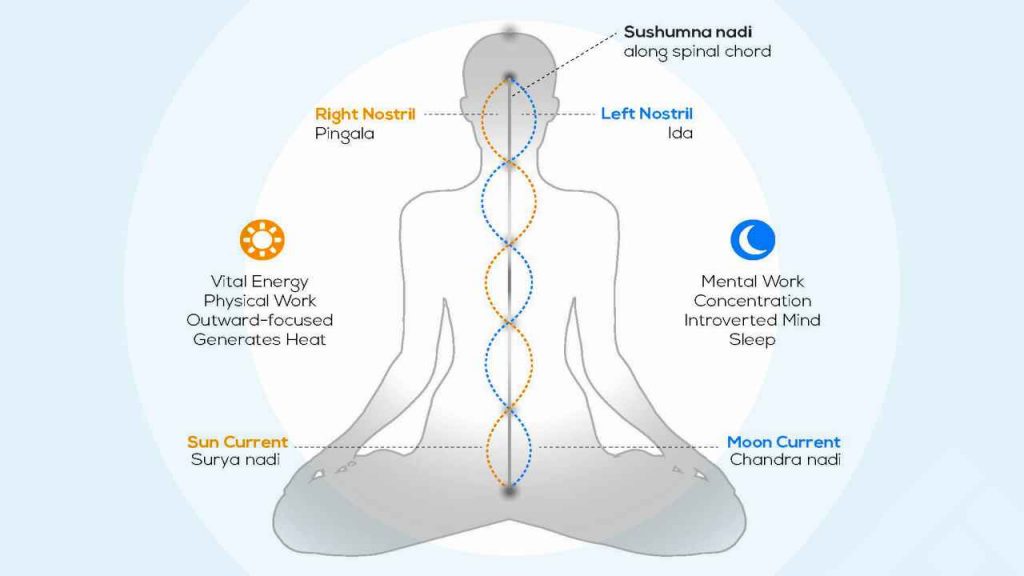
What is Pranayama: A Lowdown on Prana, Vayus, and Nadis

The study of yoga as mentioned by Maharishi Patanjali is divided into eight parts — these are commonly known as the eight steps in the path of yoga. Pranayama is the fourth one, whereas asana is the third. So, what is pranayama? Well, the word “pranayama” is derived from two Sanskrit words, “prana”, which means vital energy or life force that exists in all living things, and “ayama”, which is defined as expansion or extension as opposed to “yama”, which means control. The word pranayama, therefore, means expansion or extension of the dimension of prana.
Also read: Yoga: Types of Breathing Techniques
So, pranayama is not so much about controlling your breath, but about utilizing the breath in order to influence the flow of prana in your body. It is only through the different techniques of pranayama that one can regulate and activate this vibrant life-governing force to attain a state of vibrational energy and awareness.
What is prana?
The Sanskrit word prana means primary breath, and at times is also translated as vital force or breath. Prana yoga is something more — it is not oxygen, neither is it the soul or the spirit. It is the principle form of all energy. It has multiple functions at the micro and cellular planes within us and works on all levels of our being. The entire universe is said to be a manifestation of prana.
Types of prana yoga
For a learner, it is important to know the five types of prana and their functions in order to deepen their practice. These types of pranas are also called as Pancha Vayus or five forces of air, and have importance in many Ayurvedic and Yogic texts.

- Udana Vayu operates at the level of your throat, face, and head. Its movement is upwards and influences thought, the cognitive, affective, conative, and retentive faculties.
- Prana Vayu operates in the chest area or the thoracic region. It influences the functioning of the heart and the respiratory system. Its movement is lateral.
- Samana Vayu operates in the abdominal region. Its movement is spiral and it impacts the digestive and assimilative processes in the body.
- Vyana Vayu is operative throughout the body and governs the nervous system. Its movement is in all directions and it is responsible for the circulation of nutrients and energy in the body.
- Apana Vayu operates in the pelvic region. Its movement is downwards and it governs the excretory and generative organs in the body.
The key to leading a healthy life is harmonizing the flow of all these pranas in our body. As we practice yoga, aspects of pranas begin to awaken, thereby bringing stability, calmness, peace, grounding, lightness, and vitality within an individual.
What are nadis?
Nadis have been identified with nerves in modern anatomy. Although at times this interpretation of a nadi may seem congruent to that which is described in the ancient texts of yoga, it is not entirely so. Which brings us to the question: what are nadis and why are they important for a seeker of yoga? The sanskrit word NĀDĪ translates as a tube, channel, or flow. It is used to describe that network of channels that allows energy to travel throughout the body.

To put it simply, NĀDĪS are energy channels through which PRĀNA or divine energy, light, and universal consciousness flow in our body. Our bodies are made up of such 72,000 nadis, which ensure that our body functions optimally. In order to lead a healthy and a happy life, it is important that we clear blockages and balance them out.
There are three dominant nadis — Ida, Pingala, and Sushumna. It is essential for a practitioner, who is keen on undertaking pranayama, to note their importance. Ida Nadi arises from the left nostril and is correlated with the moon principle. On the physical level, it is associated with the left side of the sympathetic nervous system. The Ida Nadi is said to cool, quieten, and refresh the body and the mind just like the silvery glow of the moon. It has an effect on the right hemisphere of the brain.
Also read: Breath Awareness in Yoga: Dos and Don’ts
Pingala Nadi arises from the right nostril and symbolizes the sun principle. On a physical plane, it is said to have an effect on the right side of the sympathetic nervous system. Pingala nadi, taking after the sun, is responsible for warmth and activity within an individual. It is linked to the left hemisphere of the brain.
Sushumna Nadi runs through the centre of the spine, and it represents the divine consciousness. Anatomically speaking, it is concerned with the parasympathetic nervous system. Chakras are formed at the points where Ida and Pingala merge with the central cord, thus creating powerful energy centres.
It is only through the practice of pranayama that we can aim to activate and harmonize the Ida and Pingala nadis.
References
1. Nadis. Chakras.net. https://www.chakras.net/yoga-principles/nadis (accessed Oct 11, 2020).
2. Frawley D. Understanding Prana. Yoga International. https://yogainternational.com/article/view/understanding-prana (accessed Oct 11, 2020).
3. Yogendra H. Yoga for All. The Yoga Institute. 2018














